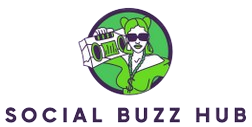Introduction:
Images play a crucial role in enhancing the visual appeal of websites and attracting the attention of visitors. But have you ever wondered how these images are displayed on web pages? That’s where Image URLs come into the picture.
What is an Image URL?
An Image URL, also known as an image link, is a web address that points to the location of an image file on the internet. It is used to retrieve images and display them on web pages.
Why are Image URLs Important?
Image URLs serve several important purposes:
- Accessibility: Image URLs allow users with visual impairments to access website content using screen readers.
- Speed and Performance: Optimized Image URLs can help improve website loading times and overall performance.
- Search Engine Optimization (SEO): Image URLs play a crucial role in helping search engines understand and index images on a website.
How to Use Image URLs Effectively:
1. Choose Descriptive Image Filenames: When saving images, use descriptive filenames that reflect the image content. This can help with SEO and make it easier to identify images later.
2. Use Alt Text: Alt text is an HTML attribute that provides a text alternative for images. By including descriptive alt text, you can make your images more accessible and improve SEO.
3. Optimize Image Size and Format: Large image files can slow down website loading times. Use image compression techniques and choose appropriate file formats like JPEG or PNG to optimize image size without compromising quality.
4. Consider Image Sitemaps: Including image URLs in your website’s sitemap can help search engines discover and index your images more effectively.
5. Utilize Image CDNs: Content Delivery Networks can store and deliver your images from servers located worldwide, improving their loading speed and reliability.
Conclusion:
Understanding Image URLs and how to use them effectively is crucial for enhancing website accessibility, performance, and search engine optimization. By following best practices and optimizing your image URLs, you can create a better web experience for your users and attract more organic traffic to your site.

